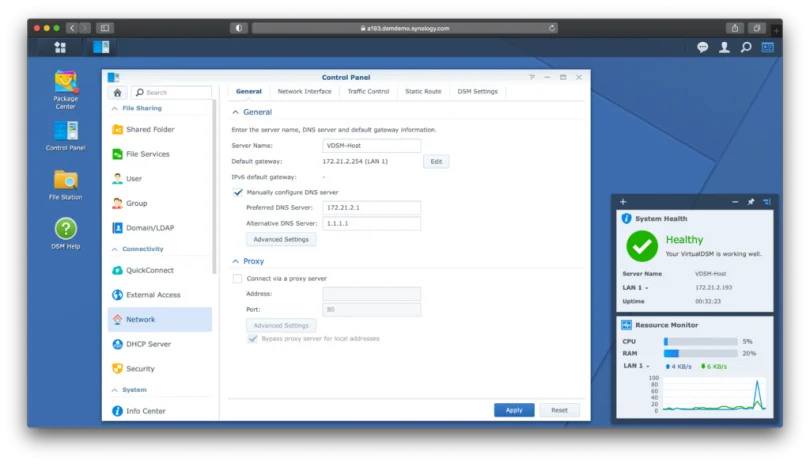One of the best things you can do for your expanding business is upgrade your existing network attached storage (NAS) system. Compared to individual hard drives or workstations, they offer more storage space, a central location to manage your essential information and backups, and simpler multi-site communication. If you don’t configure your NAS correctly, you might wind up spending what feels like years on the phone with support, so in this article we will make full explain to How to Set Up and Configure a NAS
We offer a guide to help you choose the appropriate NAS for your needs, and you’ll want to make the most of your investment. Talk about how to configure your NAS utilizing storage deployment best practices.
To begin, we’ll look at a few things.
Locating your NAS and optimizing your network.
Create a file structure, grant permissions to users/administrators, and more.
How to set up NAS software and backup services on a Mac.
As a disclaimer, this advice will work for virtually all NAS systems, with the exception of very big and sophisticated systems generally placed in data center racks with bespoke network and power connections. In order to do so, you’ve presumably already progressed over the NAS 101 level.
Keep Your NAS in a Safe Place
Choose your NAS location by taking into account the following factors. As an example, consider the following:
Instead of locating the NAS within a temperature-controlled server or IT equipment room, pick a location with adequate ventilation that stays cold to protect your NAS from higher temperatures, which might decrease component life.
Clean:this might be an indication that dust is infiltrating the internal systems of your NAS. For both system cooling fans and power supply fans, which are generally located behind grills at the rear of the device, dust is a significant cause of failures. You’ll want to make sure your NAS’s surroundings is clear of dust, and you’ll want to check on the fans and the surrounding space on a regular basis. Remove surface dust with a static-free cloth if you observe dust accumulation, and check the airflow in the space. Filters in the air can help reduce dust.
A level, sturdy surface is ideal for your system to be placed on. Avoid putting your NAS in rooms with a lot of traffic to save on power costs. Hard drives in a NAS are sensitive to vibration, and they like to be left alone.
It’s preferable to keep a physical asset like a network attached storage device in a closed room, but if that’s not possible, attempt to locate a place where visitors won’t have an easy time getting in.
How to Connect Your NAS
In order to improve the system’s dependability, you must optimize the network that connects your NAS to your users’ computers. Some things to keep in mind when setting up a network:
- Good Ethernet cabling and router connections should be used while creating a network. An old switch or damaged Ethernet connections might cause inconsistent connectivity or sluggish file serving.
- When it comes to IP addresses, you have a few alternatives if your NAS has more than one network port (e.g., two 1GigE Ethernet connections). No need for a router while using your NAS. The primary internal network that all of your users share might be linked to one port, while cameras or IoT devices connected to the internet could be connected to the second port
- To offer its services, your NAS relies on domain name servers (DNS). Each port can have two DNS records, which is standard on most NAS systems. However, it’s excellent practice to supply a main and secondary DNS server for the system to query, even if you’re already operating a DNS service locally (e.g., such that staging.yourcompany.local points to your company’s internal server).
A Guide to Access Control: Who and How
However, there are a few recommended practices that might make maintenance easier. To assist you prepare for system longevity, we’ve compiled a list of ways that you may use.
How to set up administrator rights
Who has the kingdom’s keys? It’s not clear what will happen if that individual switches departments or quits. Your NAS system should include contingency planning for these scenarios. Preparation can be made easier with the following two practices:
- Assign the role of administrator to a number of persons you trust. In addition to the usual administrator name and password, it’s a good idea to have at least one extra administrator account. Backup administrators can log in if the primary admin is not accessible. Additionally, utilizing a password manager for your company like Bitwarden is strongly advised.
- For notifications, use role-based email. For example, when the power goes out or a disk fails, your NAS system will send an alarm through email to the email address you provide. When entering email addresses, use role-based emails instead than individual emails. However, [email protected] will always be there to help you whenever you need it. It’s common for role-based emails to be sent as a group email, which lets you designate many individuals to the account and increases the probability that someone will be available to react to warnings.
Enjoy All the Benefits of Your NAS, here we explain How to Configure a NAS with easy steps, and we hope this article be as help for you in the future.






